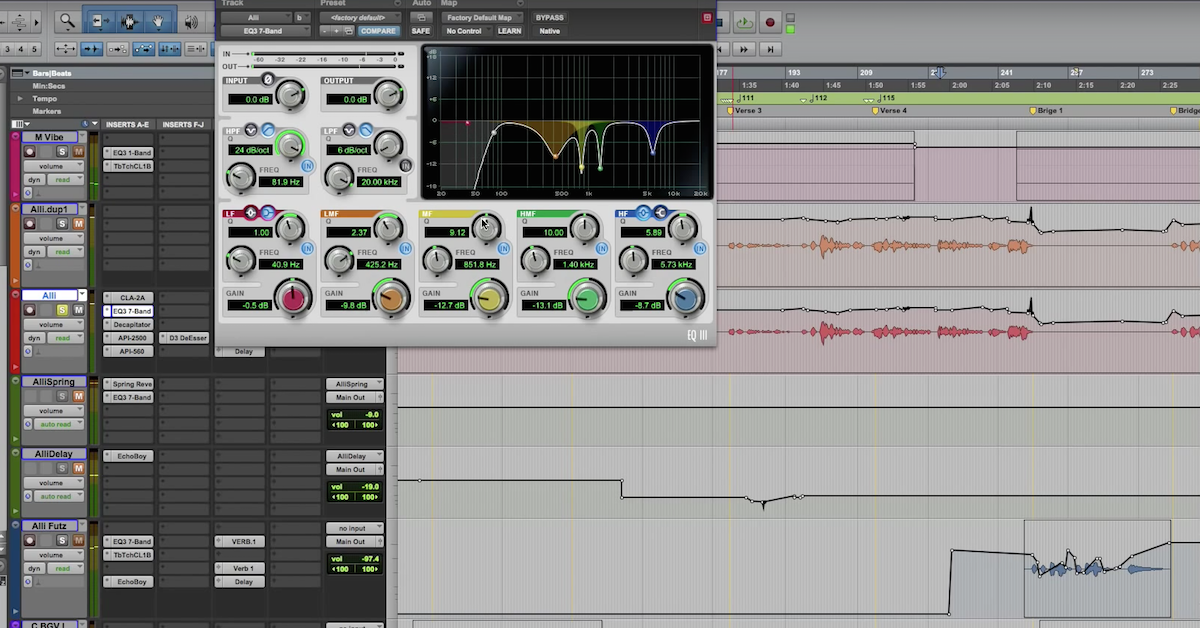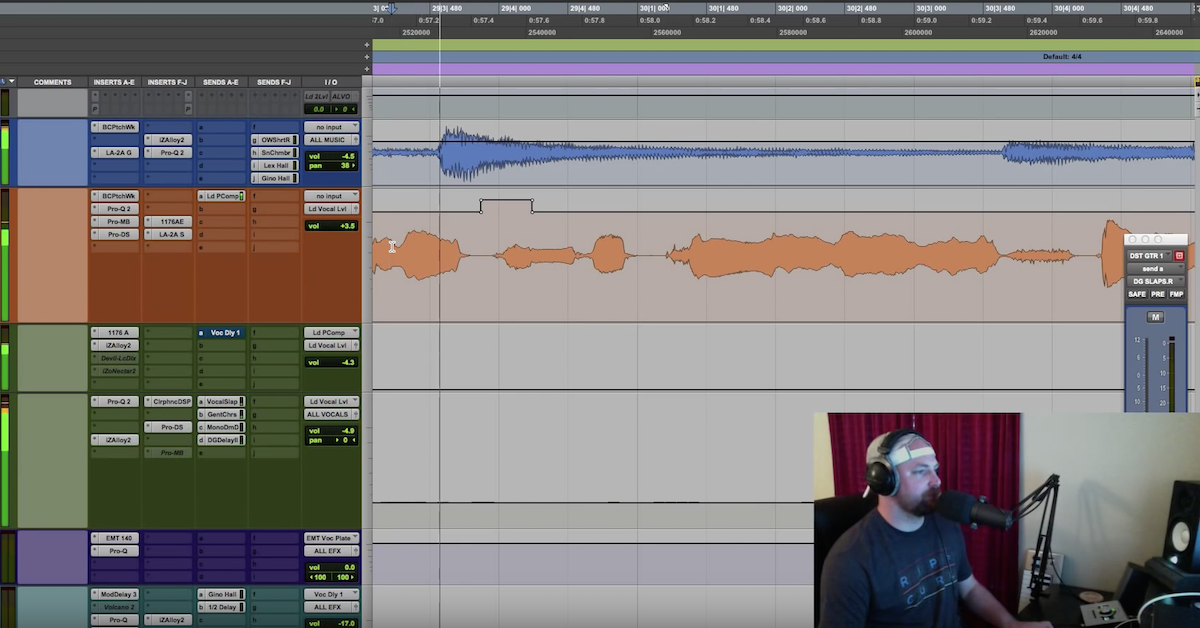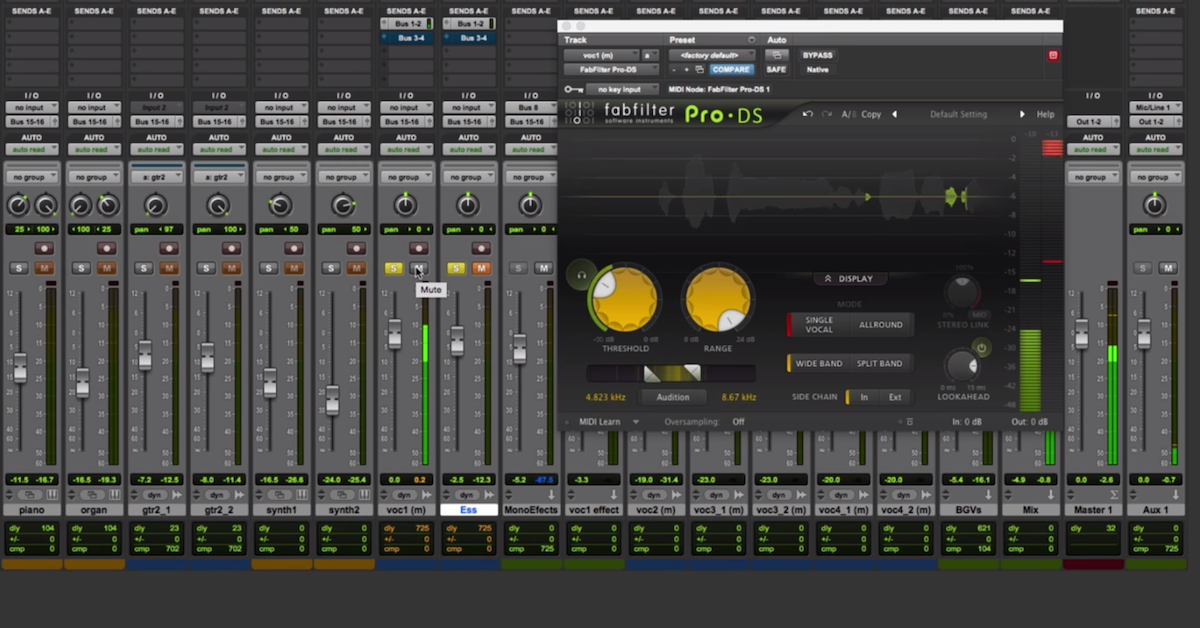Bob Power on Lead Vocal and Mix Bus Processing
[mix]
Take a look — look at all I’m doing, guys. I never do stuff like that. Take a listen without all of the processing.
[mix, no processing on lead vocal]
Okay, now I remember Esther. She’s one of those people that in different dynamic ranges of the voice, the timbre changes radically. Multiband will help with that, but multiband compression can also take all of the life out of something if you’re not careful, although I did. I used a C6 just to take away when she sings real loud, that harshness in the upper mid-range comes up, and you can see it right here. Let’s take a look.
[song]
De-esser.
[vocals, de-essed]
Okay, and in this case, it’s interesting, I’m actually using the de-esser on the mid-range. I’m using the de-esser at 2kHz to take away some of that snarfiness on the vocal, rather than the sibilance per se, without it.
[vocals]
With it.
[vocals, de-essed]
A Phoenix to a tape emulation plugin, just to take some of the — again, to take some of the edge off. Let’s take a look at the vocal EQ. Mostly cutting. A little boost in the high end just for air. The high end boost is actually not for brightness, it’s up at 12kHz, so it’s just to define the image a little bit better.
CL-1B, and again, this is — if you guys know this piece, it tends — it’s a good compressor for smoothing out harshness in stuff.
[vocals with compressor]
And I can’t believe I used two tape sims. I guess, you know, when my ears get tired, everything starts sounding harsh to me, so that’s real tough. I’m not going to go over the ambience in this right away, but again, with her, the challenge is timbre-ally, she’s all over the place. In different pitch and dynamic ranges of her voice, the sound of the voice changes a lot, and that in itself is not bad, it just gets annoying when you’re trying to listen to a moving target. You want it to be a constant presence, and that’s pop music.
Let me just see what I did across the master buss. Wow, a lot of stuff. ATR-102. Really tape compression focuses the mid-range in a really nice way.
API-2500. In this case, I’m not so much using it for gain control, I’m using it as envelope modification. I tried to set the attack and release controls so it would make the track pump a little bit more, and again, it’s usually a fairly slow attack and a real fast release, which gives you a little more excitement out of the thing.
A little parametric EQ. See, I’m actually just notching, not boosting, and a little air. Wow, I’m boosting at 25kHz. Do we hear up there? No, but remember, it’s a shelf, so I don’t hear anything above 10kHz anymore, but remember, it’s a shelf, so whenever you boost way up here, it’s affecting everything below it just a little bit. Just a little bit more air in the track, and — oh look at that, SoundToys Radiator.
Again, my idea was I just wanted this to sound kind of trashy, and this thing — this is a harmonic generator, so it made everything sound a little warmer. Let me just put everything in and we’ll listen to the effects of these things.
[mix]
Bypassed.
[mix, no Radiator]
In. Gives a little bit more substance. ATR.
[song]
Focuses the mid-range a lot. Compression…
[music]
In. You can really hear pumping a little bit. You know, normally, you don’t want to hear pumping from your program compressor, but in this case, I did, because I wanted it to be a little more exciting.
[mix]

![Bob Power on Lead Vocal and Mix Bus Processing [MixCon Shorts]](https://i.ytimg.com/vi/OBd35N8OStY/hqdefault.jpg)



